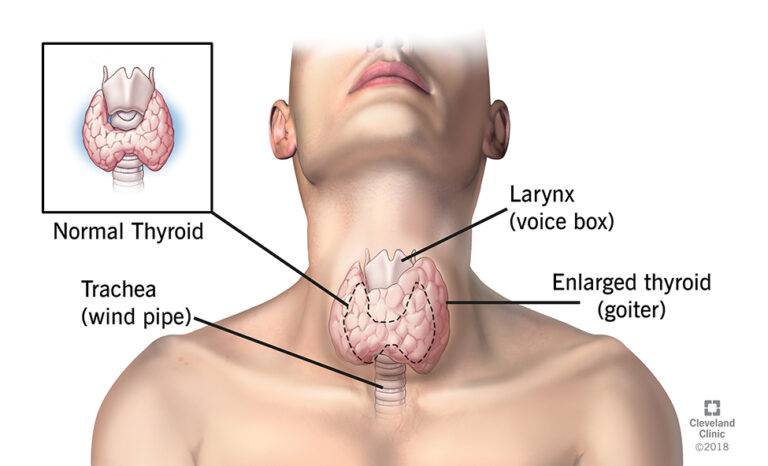Pituitary Gland: Facts to Know
Author: Alvin
Alvin
Category: Health
Pituitary gland is referred to as the “master” gland of the endocrine system. Because it regulates the actions of several other glands in the endocrine system, including the thyroid. The pituitary is a small that is positioned near the base of the brain. And is no bigger than a pea. Nerve fibers and blood arteries connect the pituitary gland to the hypothalamus. (A portion of the brain that has an effect on the pituitary gland). In terms of structure, the pituitary gland is composed of two major structures. The anterior lobe and posterior lobe.
Your pituitary gland is a vital organ that is only the size of a pea. If this is is not functioning properly, it can have a negative impact on critical organs. such as your brain, skin, energy, mood, reproductive organs, vision, growth, and other areas of your body. It is referred to as the “master” gland. Since it directs the release of hormones by other glands.
In exchange, the pituitary is controlled to a significant extent by the hypothalamus. An area of the brain that is located right above the pituitary gland. And responsible for the regulation of many bodily functions. The hypothalamus or the pituitary can calculate how much stimulation the target glands. Require by measuring the levels of hormones generated by glands under the control of the pituitary (target glands).
Where is my pituitary gland?
The pituitary gland is a tiny gland that is located in the sella turcica (‘Turkish saddle,’). A bony hollow in the base of the skull, underneath the brain, and behind the bridge of the nose. It is responsible for the production of hormones. Such as growth hormone and testosterone. Each of the two main components of the pituitary gland. The anterior pituitary and the posterior pituitary gland. Plays a role in the body’s functions.
The hypothalamus, a portion of the brain that regulates the functioning of the gland, is linked to the gland. Several small blood arteries connect the anterior pituitary gland to the brain. Allowing it to function properly. It is important to note that the posterior pituitary gland is truly a component of the brain. And it secretes hormones directly into the bloodstream at the direction of the brain.
What does my pituitary gland do?

Because the hormones produced by the pituitary gland regulate so many various processes. In the body, it is referred to as the “master gland” in certain circles. It detects the demands of the body and sends signals to various organs and glands throughout the body. In order to regulate their function and maintain a suitable environment for the body’s needs. This secretes a range of hormones into the bloodstream. Which operate as messengers, transmitting information from the pituitary to distant cells. And regulating their activity as a result of this transmission.
For example, the pituitary gland releases prolactin, which stimulates milk production in the breasts. When it interacts with the gland. The pituitary gland also secretes hormones that act on the adrenal glands. Thyroid gland’ data-content=’1456′ >thyroid gland, ovaries, and testicles. All of which are involved in the production of other hormones through the pituitary gland. The pituitary gland, by the secretion of its hormones, regulates metabolism, growth, sexual maturation. Also reproduction, blood pressure, and a wide range of other critical physical functions and processes in the body.
It secretes hormones from both the front (anterior) and the back (posterior) of the gland. As well as from the medulla. Is via the circulation of your bloodstream that hormones communicate messages from one cell to another.
Hypopituitarism is a condition in which your pituitary. Does not produce enough of one or more hormones, as determined by your doctor.
If, on the other hand, you are overproducing certain hormones. You will exhibit characteristics that are caused by the excessive production of the particular hormone in question.
The Hypothalamus
Because it is located directly above the pituitary. The hypothalamus has the ability to send messages to and from the pituitary gland.
Since it acts as a communications hub for the pituitary gland. It sends messages or signals to the pituitary gland through the bloodstream. And nerves that travel down the pituitary stalk to the pituitary gland. Furthermore, these signals regulate the creation and release of other hormones from the pituitary gland. Which in turn communicate with other glands and organ systems throughout the body.
The hypothalamus is responsible for regulating body temperature. Controlling food intake, controlling thirst and water intake, regulating sleep and waking cycles. Also, regulating emotional behavior, and regulating memory.
Pituitary Gland Malfunction
The pituitary gland can malfunction in a variety of ways. The majority of which are cause by the development of a noncancerous tumor (adenoma). In certain cases, the tumor can cause an overproduction of one or more pituitary hormones. While in other cases, the tumor can press on normal pituitary cells. Resulting in an underproduction of one or more pituitary hormones.
In addition, the tumor may induce an expansion of the pituitary. Which may or may not interfere with hormone synthesis. A pituitary tumor can cause overproduction of one hormone. While also causing underproduction of another hormone. At the same time as a result of strain on the gland.
Excess cerebrospinal fluid can sometimes encircle and compress the pituitary gland. Causing it to function improperly (resulting in empty sella syndrome). The strain on the pituitary may lead it to overproduce or underproduce hormones.
A pituitary hormone that is either too little or too much results. In a wide range of symptomatic manifestations.
Pituitary Surgery

Many pituitary disorders caused by a benign tumor. And surgery is frequently the most effective line of action – and surgical techniques. These are constantly advancing in this area.
Having surgery performed by a competent neurosurgeon is a safe. And generally uncomplicated process, which we can assure you of.
An incision inside your nostril or under your upper lip used to remove the majority of tumors. This procedure referred to as ‘transsphenoidal surgery.’ When the surgeon takes this method, he or she will able to see your pituitary gland. Without disturbing the main part of your brain.
The operation will usually take around five days in the hospital, and you should be able to go home. The next day and resume your normal activities and diet. The drip will placed in your nostrils for a day or two. And you may also given antibiotics to avoid an infection in your nasal passages. Recovery timeframes vary from person to person. With an average of four to eight weeks off from work. If the patient still employed after the procedure.
Pituitary Conditions follow-up treatment
The majority of persons who have a pituitary tumor and/or ailment. Will need to go to a specialist endocrine clinic. On a regular basis for the rest of their lives.
These check-ups allow the specialist to keep an eye on your health and detect any changes. As soon as they occur, which is extremely important. After receiving first treatment, the majority of patients experience. No further changes in their condition (s).
When it is not possible to completely remove a pituitary tumor during surgery. Regrowth of the tumor can occur on occasion. If you received radiotherapy following your surgery, your chances of experiencing this are lower. If regrowth does occur, you may require additional operation or radiotherapy. Each case is unique and may require a different treatment.













